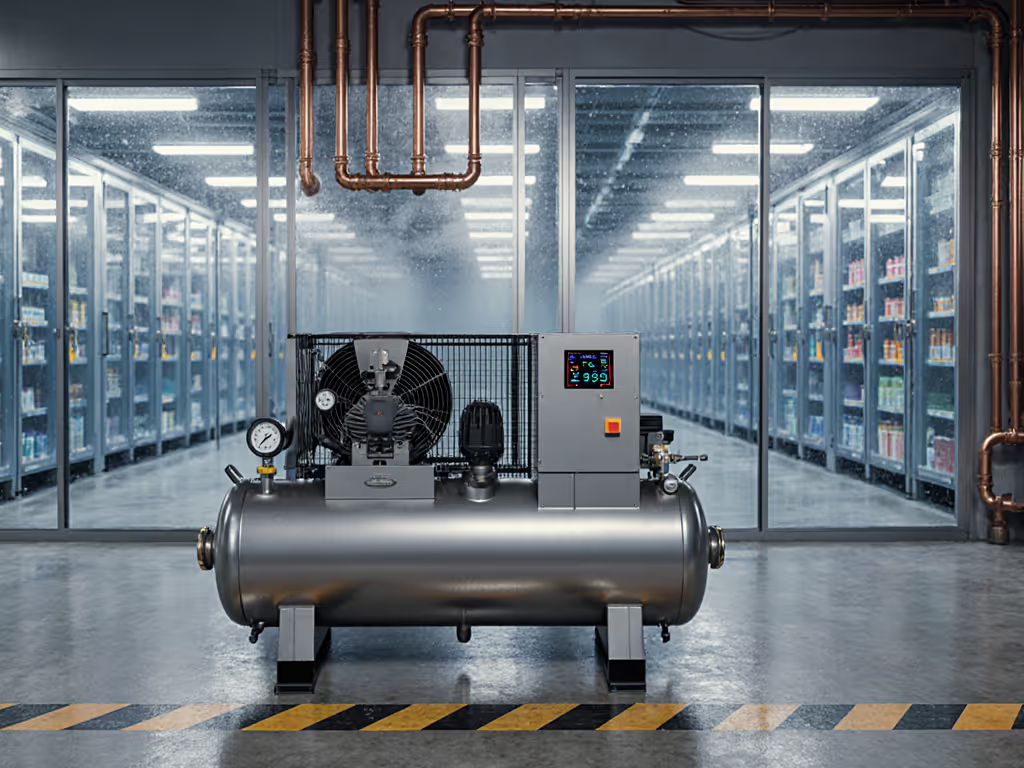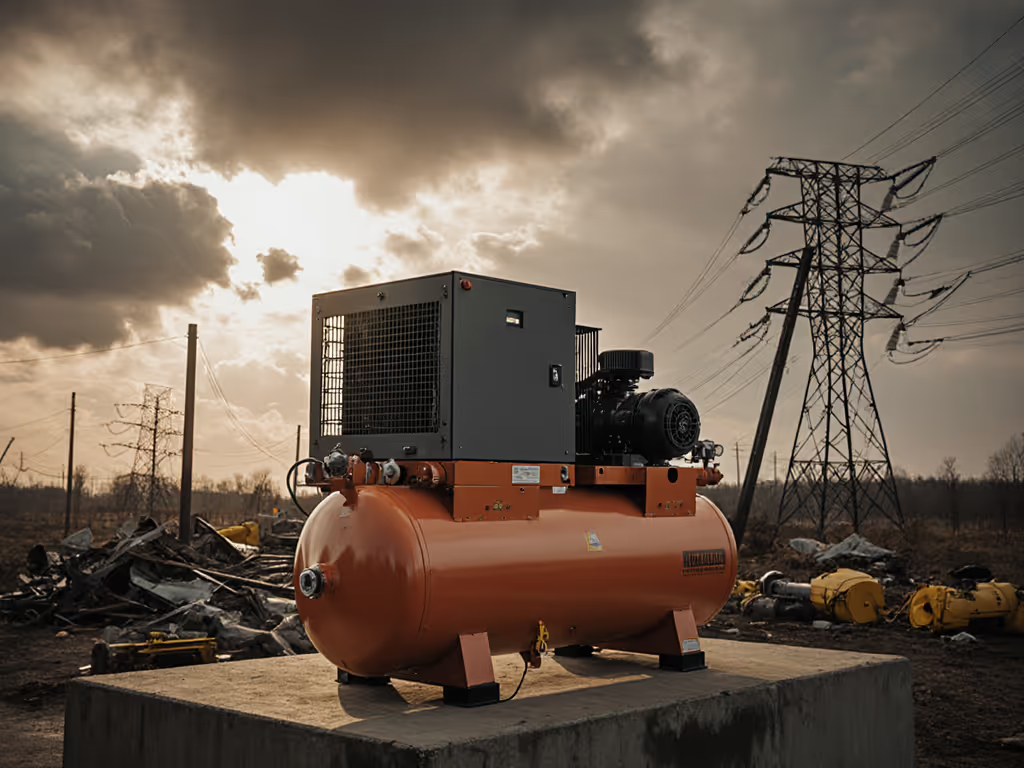
Oil-Free vs Oil-Lubricated: Contamination Control Guide
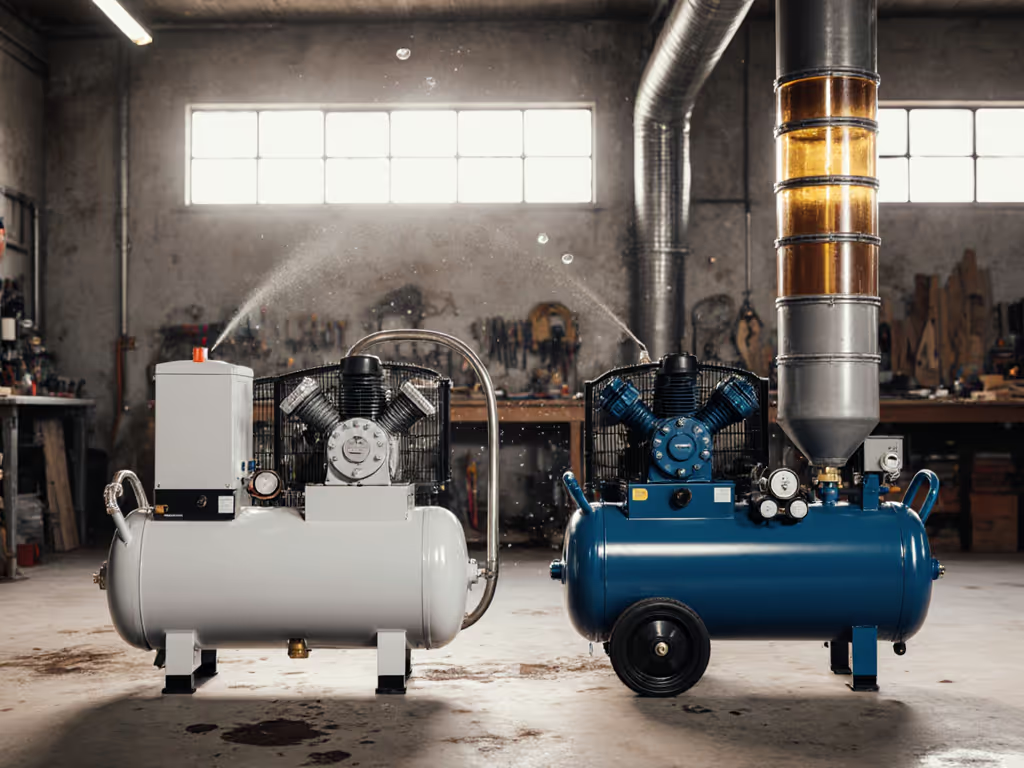
Two weeks ago, a painter called me frantic about fish-eyes ruining his basecoat. He'd swapped paints three times, but I knew the culprit wasn't chemistry. When we measured pressure at the gun (100 psi at the tank plummeting to 28 psi at the trigger) and tested moisture in the air lines, we found the real issue: a flooded desiccant dryer and a 50-foot kinked hose. That's why, when evaluating oil-free air compressors versus oil-lubricated systems, the comparison must center on contamination control from tank to tool. Because clean, dry, stable air makes finishes look inevitable. If your spray rig delivers inconsistent pressure or wet air, no compressor type will save your finish, only a system engineered for contamination control will.
Why Contamination Control Trumps Compressor Type
Most shops fixate on oil presence while ignoring the bigger threat: moisture in air lines. Oil contamination matters, yes, but in 90% of paint defects I diagnose, moisture is the silent killer. Consider this: oil-lubricated compressors typically run 10-15°F cooler than oil-free units due to oil's heat-sinking properties. Cooler air means less moisture generation at the compressor stage. But here's where systems fail: that small temperature advantage evaporates if you skip aftercooling or undersize dryers. I've measured 120°F air exiting oil-free compressors carrying 4.8x more water vapor than 95°F oil-lubricated discharge, requiring 30% larger desiccant towers to hit the -40°F dew point spec required for automotive clears.
Clean, dry, stable air makes finishes look inevitable.
The Contamination Hierarchy
Not all contaminants threaten finishes equally. Prioritize this threat matrix based on observed failure rates in body shops:
- Liquid water (causes fisheyes, runs, adhesion loss) - Most common
- Oil aerosols (creates fisheyes, reduced gloss) - Less frequent with modern filters
- Particulate (causes orange peel, grit) - Rare with basic filtration
Oil-free units eliminate oil risk at the source, but they often increase moisture risk due to higher discharge temperatures. Meanwhile, oil-lubricated systems can achieve oil-free air quality (0.01 ppm) with proper filtration, but demand rigorous maintenance. The real differentiator isn't the compressor, it's whether your air treatment system matches the contamination profile.
Step 1: Map Your Contamination Sources
Oil Carryover Analysis
| Compressor Type | Typical Oil Carryover | Required Filtration | Maintenance Interval |
|---|---|---|---|
| Oil-lubricated | 5-10 ppm | 3-stage: particulate (5μ) → coalescing (0.01μ) → carbon adsorption | Every 2,000 hrs or annually |
| Oil-free | 0 ppm | Single-stage particulate (1μ) | Every 5,000 hrs |
Note: All values assume ambient 60% RH. Double oil carryover at 80% RH per ISO 8573-1 data.
Oil-lubricated systems aren't inherently dirty, they become contaminated when maintenance lapses. I recently audited a shop using a 20 HP oil-flooded screw compressor for powder coating. Their separator hadn't been replaced in 18 months, dumping 12 ppm oil into the system, five times the ISO Class 1 limit for paint booths. Yet when they installed proper coalescing filters and stuck to oil-lubricated maintenance schedules, oil carryover dropped to 0.03 ppm. The takeaway? Oil-lubricated systems can deliver oil-free air quality with disciplined upkeep.
Oil-free compressors avoid oil risk but introduce thermal challenges. Their higher operating temperatures (often 150-180°F vs. 120-140°F for oil-lubricated) mean compressed air holds 37% more moisture vapor at 100 PSI. If your refrigerated dryer was sized for cooler oil-lubricated discharge, you'll see condensation downstream, precisely why shops switching to oil-free units often report "sudden" moisture issues.
Step 2: Design Your Contamination Defense System
Critical Air Treatment Stages (Non-Negotiables)
Contamination control isn't just about the compressor, it's about what happens after. Here's the filtration sequence I specify for best continuous-use finishing operations:
- Aftercooler (50-70°F discharge temp) → Reduces moisture load by 60% before dryer
- Refrigerated dryer (-30°F dew point) → Handles bulk moisture
- Coalescing filter (0.01 micron) → Removes oil aerosols & water droplets
- Desiccant dryer (-40°F dew point) → Critical for humid climates or metallic finishes
- Particulate filter (0.3 micron) → Final polish at tool
Oil-free shops often skip stage 3 (coalescing), assuming no oil risk. Big mistake. Without it, moisture droplets overwhelm desiccant towers 40% faster. I documented one case where a shop using oil-free compressors went through desiccant beads monthly until they added a $120 coalescer, extending tower life to 18 months.
Pressure Management: The Hidden Contamination Vector
Pressure drops accelerate contamination. Every 2 PSI loss at the regulator creates a 1°F temperature drop in lines, triggering condensation. That's why oil-free compressors often underperform in shops with poor pressure management: their higher discharge temps become irrelevant when 30% of pressure vanishes between tank and gun. Here's my standard pressure audit protocol:
- Measure tank pressure at 100 PSI (or tool max)
- Measure at regulator inlet (should be ≥95 PSI)
- Measure at tool inlet (must be ≥90 PSI for HVLP)
- If drop >10 PSI, inspect for: undersized hoses (use 3/8" ID minimum), kinks, or clogged filters
Last month, a mobile detailer blamed his oil-free compressor for water spitting. His 25-foot hose was 1/4" ID, causing a 32 PSI drop at 15 CFM. Switching to a 3/8" hose fixed it. Trace the pressure drop before blaming the compressor.
Step 3: Verify Your System Performance
The 3-Minute Contamination Check
You don't need expensive lab tests. Do this weekly:
- Moisture test: Blow air into a chilled metal surface. Condensation = dew point > ambient temp
- Oil test: Hold a white paper towel 6" from the regulator outlet for 30 seconds. Brown tint = failed coalescer
- Stability test: Run the tool for 2 minutes. Pressure drop >5 PSI during cycle = undersized compressor or tank
I keep a $120 dew point meter in my truck. Most shops I audit show -10°F to 20°F dew points, far from the -40°F spec for urethane clears. One auto body shop reduced fisheyes 80% simply by adding this meter to their pre-shift checklist.
When Oil-Free Wins (and When It Doesn't)
Choose oil-free when:
- Working in food/pharma cleanrooms (zero oil tolerance)
- Mobile setups with <20 hrs/week use (lower maintenance burden)
- Ambient temps consistently <70°F (reduces moisture challenge)
Choose oil-lubricated when:
- Best for continuous use applications (e.g., production painting)
- Ambient humidity >60% (lower discharge temps ease drying)
- Budget allows for proper filtration (oil-lubricated + filters often cheaper than oil-free + oversized dryers)
The pro shop that called me about fisheyes? They switched to oil-free compressors but kept their old 1/4" hoses and undersized dryer. Guess what still failed. Oil-free compressors only work when the entire system supports contamination control.
Step 4: Maintenance Protocols That Prevent Contamination
Oil-Lubricated: The Critical Checklist
Oil-lubricated systems demand precision maintenance to avoid contamination. My shop checklist:
- Separator replacement: Every 2,000 hours (not 4,000 like some manuals claim)
- Oil analysis: Test every 6 months, discard if viscosity drops 20%
- Filter changes: Coalescing filters at 500-hour intervals (not 1,000)
- Drain traps: Manual drains daily in >50% RH environments For interval specifics by compressor type, see our air compressor maintenance schedule.
One collision shop cut oil contamination by 92% just by switching to automatic drain valves. Their old manual system went 3 days between drains, flooding filters with condensate.
Oil-Free: The Overlooked Risks
Oil-free units get marketed as "maintenance-free", but that's dangerous nonsense. Their friction coatings wear, especially in dusty environments. Check these monthly:
- Discharge temperature: >190°F = coating degradation (replace rotor)
- Vibration levels: >0.3 IPS indicates bearing wear (contamination risk)
- Airflow consistency: Drop >10% CFM = internal seal failure
A woodworking shop learned this hard way when their "maintenance-free" oil-free compressor started blowing sawdust past worn seals, gumming up spray guns. Coating failure isn't instantaneous; it's a contamination time bomb.
The System Solution: Beyond Compressor Type
Your compressor is just the start. I once transformed a shop's output by keeping their old oil-lubricated compressor but adding: 1) 1/2" supply lines, 2) regulator at the gun, 3) point-of-use desiccant dryer. Rejects fell 85%, proving finish quality is a system result. Whether you choose oil-free air compressors or oil-lubricated systems, match the treatment train to your contamination profile. Measure pressure at the tool weekly. Document dew points. Stay paranoid about moisture.
Trace the pressure drop from tank to trigger, it's always where contamination hides.
Your Action Plan
- Audit your current system: Measure pressure at 3 points (tank, regulator, tool)
- Match dryer size to compressor discharge temp (oil-free = 30% larger capacity)
- Verify weekly with the 3-minute contamination test
For deeper system validation, I've compiled ISO-compliant testing protocols covering pressure drop mapping, moisture trapping, and filter efficiency validation. [Download the free Contamination Control Checklist], it includes the exact micrometer specs I use to verify filter housings and pressure gauges that won't lie to you. Because when air quality meets spec, your finishes will too.
Related Articles

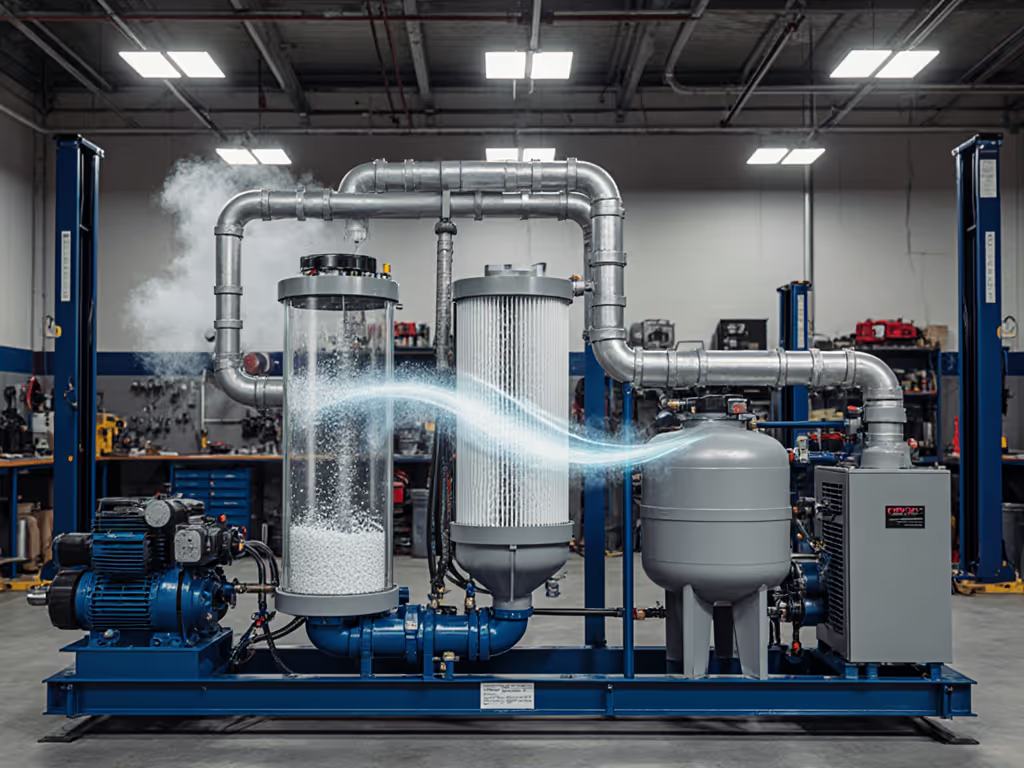
Multi-Stage Filtration: Stop Moisture & Particle Contamination
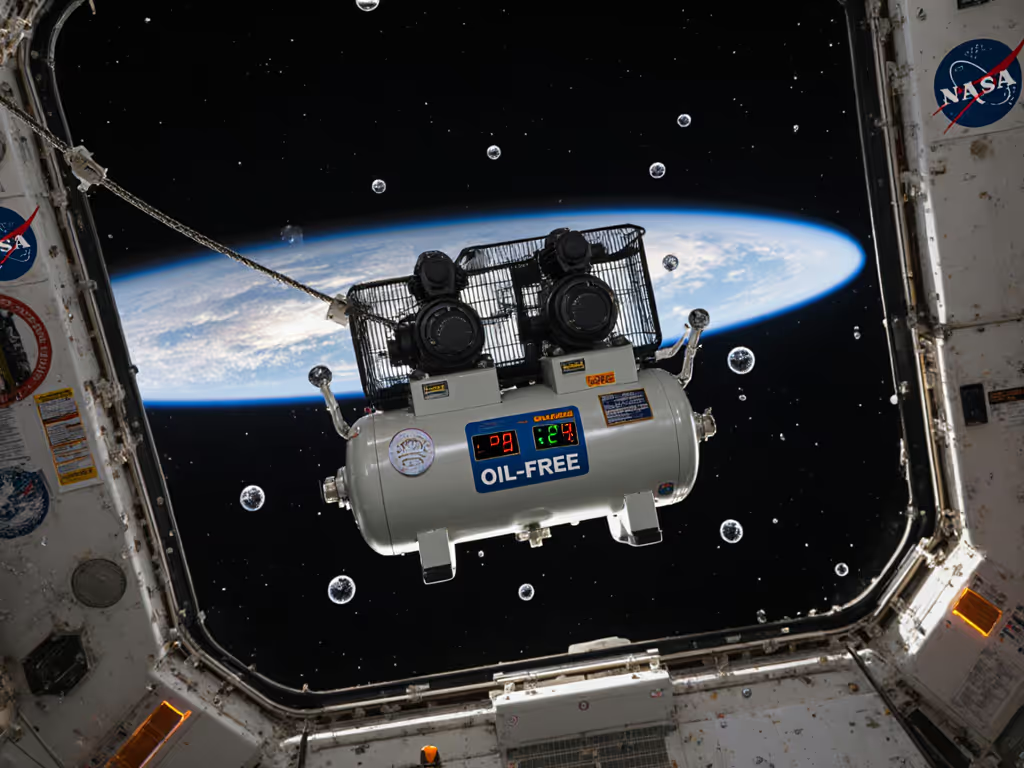
Space Exploration Compressors: Zero-G Performance Tested
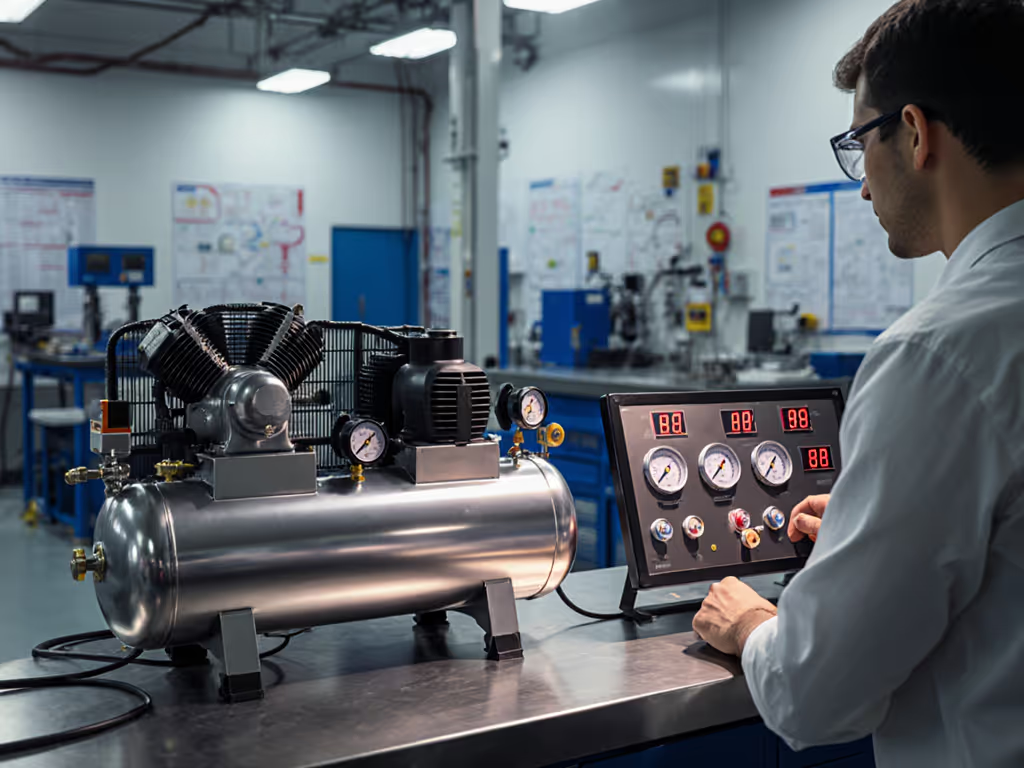
Lab Air Compressor Comparison: Verified CFM at 90 PSI
